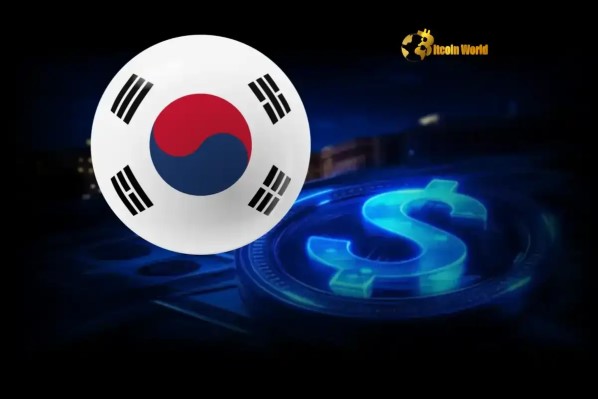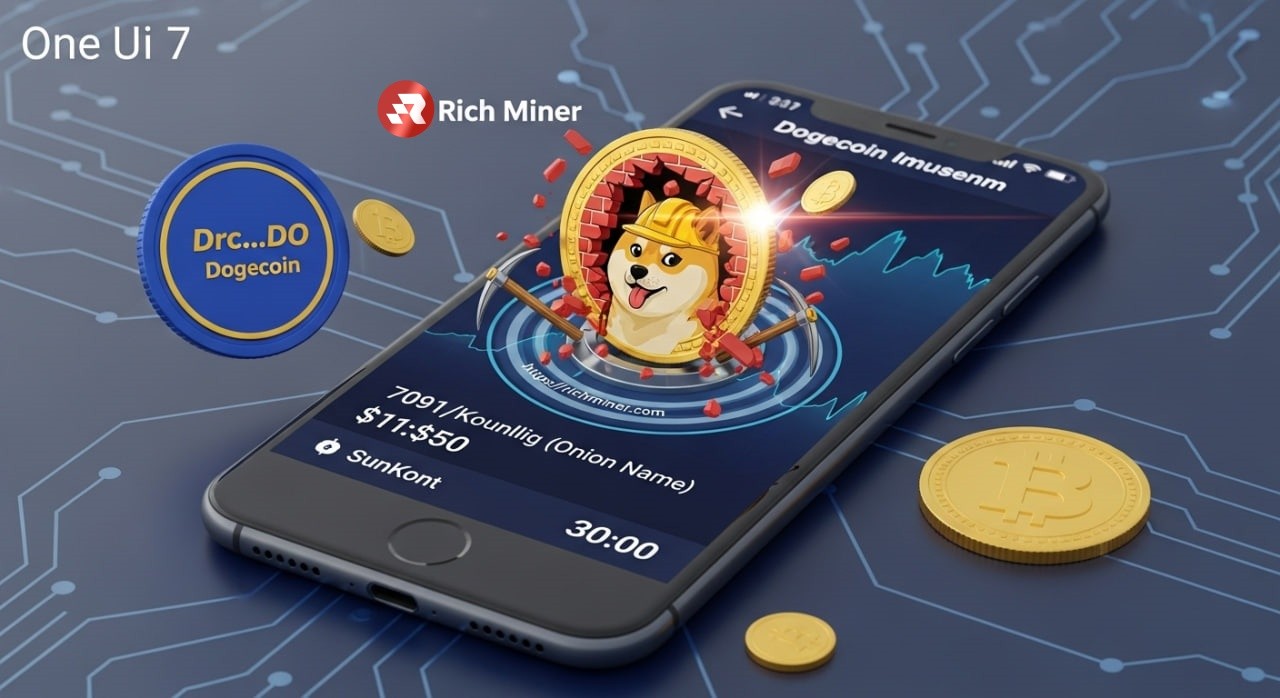BitcoinWorld

KRW-Based Stablecoins: Unlocking Immense Demand in South Korean Digital Finance
The world of digital finance is constantly evolving, and at its forefront, South Korea is emerging as a pivotal player. Recent statements and strategic moves from key figures and major corporations highlight a burgeoning interest in stablecoins pegged to the Korean Won (KRW). This development signals a significant shift in how international transactions and digital payments could be handled, particularly for the nation’s rapidly expanding global industries. Let’s delve into why KRW-based stablecoins are gaining such traction and what this means for the future of finance.
Why the Surging Digital Asset Demand in South Korea?
The conversation around digital asset demand in South Korea gained significant momentum with remarks from Min Byeong-deok, a prominent left-wing lawmaker who previously served as Lee Jae Myung’s head of digital assets during the South Korean presidential election campaign. In an interview with The Block, Min Byeong-deok unequivocally confirmed a robust demand for KRW payments within the realm of digital finance. This isn’t just a fleeting trend; it’s a reflection of deeper economic and cultural shifts.
Min Byeong-deok articulated that this demand stems primarily from the global expansion of South Korean content, games, and e-commerce. Consider the phenomenal success of K-pop, the global reach of Korean dramas and films, the explosive growth of Korean online gaming, and the increasing international footprint of Korean e-commerce platforms. These industries are not just thriving domestically; they are conquering markets worldwide, generating vast volumes of cross-border transactions. The existing traditional financial infrastructure, while functional, often introduces friction, delays, and costs that can hinder this rapid global expansion.
The inherent efficiency of digital payments, especially through stablecoins, offers a compelling alternative. For businesses operating on a global scale, the ability to send and receive payments swiftly and cost-effectively is paramount. This growing need for streamlined international financial flows is precisely what’s driving the confirmed digital asset demand for KRW-pegged solutions.
Understanding KRW-Based Stablecoins: A Gateway to Global Commerce
To fully grasp the significance of Min Byeong-deok’s statement, it’s crucial to understand what KRW-based stablecoins are and how they function. In essence, a stablecoin is a type of cryptocurrency designed to minimize price volatility, typically by pegging its value to a stable asset like a fiat currency, gold, or another cryptocurrency. In this context, a KRW-based stablecoin is a digital asset whose value is designed to remain consistently equal to one Korean Won.
These stablecoins operate on blockchain technology, offering the benefits of decentralization, transparency, and speed that are characteristic of cryptocurrencies, but without the wild price swings often associated with assets like Bitcoin or Ethereum. This stability makes them ideal for everyday transactions, remittances, and cross-border payments. For South Korean businesses and consumers engaging in international commerce, KRW-based stablecoins could serve as a powerful gateway, offering several key advantages:
- Reduced Volatility: Unlike unpegged cryptocurrencies, their value remains stable, making them reliable for pricing and payment.
- Faster Transactions: Blockchain technology allows for near-instantaneous settlement, often significantly quicker than traditional banking rails.
- Lower Fees: Transaction costs can be substantially lower, especially for international transfers, compared to conventional wire transfers or credit card fees.
- Enhanced Accessibility: They can facilitate financial inclusion by providing a digital payment method for individuals or businesses that might be underserved by traditional banking systems.
- 24/7 Availability: Unlike banks with limited operating hours, stablecoin transactions can occur at any time, any day of the week.
Imagine a K-pop fan in Europe wanting to purchase merchandise directly from a Korean vendor, or a gaming company in the U.S. paying a Korean developer. Currently, these transactions involve multiple intermediaries, currency conversions, and associated delays and fees. KRW-based stablecoins could simplify this process dramatically, allowing for direct, efficient, and cost-effective payments.
The Economic Imperative: How Won-Based Stablecoins Reduce Capital Conversion
One of the most compelling arguments put forth by Min Byeong-deok for the adoption of Won-based stablecoins is their potential to mitigate the conversion of domestic capital into foreign currencies for overseas transactions. This economic benefit has significant implications for South Korea’s financial sovereignty and stability.
Currently, when South Korean businesses or individuals engage in international trade or make payments abroad, their Korean Won typically needs to be converted into a foreign currency, such as the US Dollar, Euro, or Japanese Yen. This conversion process incurs foreign exchange (FX) fees, often involves unfavorable exchange rates, and can lead to capital outflow. Over time, these small fees accumulate, and the constant conversion can affect a nation’s capital reserves and balance of payments.
By utilizing Won-based stablecoins for the settlement of overseas transactions, a significant portion of this conversion can be avoided. Instead of converting KRW to USD to pay a foreign supplier, a Korean company could potentially use KRW-pegged stablecoins directly. This means the underlying value, still tied to the Korean Won, remains within the domestic financial ecosystem for longer, reducing the need for immediate foreign currency acquisition.
Consider the following comparison:
| Feature | Traditional Overseas Transaction (e.g., USD) | Won-Based Stablecoin Transaction |
|---|---|---|
| Currency Conversion | Required (KRW to USD) | Minimized/Eliminated (KRW-pegged) |
| FX Fees & Rates | Incurred, potential for unfavorable rates | Significantly reduced or absent |
| Settlement Time | Days (SWIFT, ACH) | Minutes to hours (Blockchain) |
| Capital Outflow Impact | Direct capital conversion to foreign currency | Retains Won-pegged value within ecosystem |
| Transparency | Limited, reliant on bank statements | High (on public blockchain) |
This ability to retain capital within the domestic economy, even during international transactions, presents a powerful economic incentive for the South Korean government and financial institutions to explore and potentially embrace Won-based stablecoins. It aligns with broader national goals of fostering a robust and independent digital economy.
KakaoPay Stablecoin Ambitions: A Major Player’s Strategic Move
The demand for KRW-based digital payment solutions isn’t just a political talking point; it’s being actively pursued by major industry players. A significant indicator of this trend is the revelation that KakaoPay, a dominant mobile payment firm in South Korea, has submitted stablecoin-tied patent applications. This move by KakaoPay, a subsidiary of the tech giant Kakao (which also operates the ubiquitous KakaoTalk messenger), signals a serious intent to integrate stablecoin technology into its vast financial services ecosystem.
KakaoPay boasts an enormous user base in South Korea, making it one of the most influential financial technology companies in the country. Its foray into stablecoins could dramatically accelerate mainstream adoption. While the specifics of their patent applications are not fully public, they likely pertain to the infrastructure for issuing, managing, and facilitating transactions with their own KakaoPay stablecoin or a stablecoin integrated within their payment network.
The implications of a KakaoPay stablecoin are profound:
- Mass Adoption Potential: With millions of users already familiar with KakaoPay for everyday transactions, the introduction of a stablecoin could seamlessly onboard a large segment of the population into digital asset usage without needing deep technical understanding of blockchain.
- Ecosystem Integration: Kakao’s sprawling ecosystem includes not just payments but also e-commerce, gaming, content, and even ride-hailing. A stablecoin could act as a unifying digital currency across these diverse services, creating a powerful closed-loop economy.
- Enhanced Cross-Border Services: Leveraging its existing international partnerships and user base, KakaoPay could expand its cross-border payment services, offering more efficient and cost-effective ways for users to send and receive funds globally, directly competing with traditional remittance services.
- Regulatory Dialogue: As a major regulated entity, KakaoPay’s active pursuit of stablecoin technology will inevitably foster closer dialogue with South Korean financial regulators, potentially paving the way for clearer regulatory frameworks.
KakaoPay’s strategic move underscores the commercial viability and growing market interest in stablecoin solutions. It demonstrates that the vision of efficient, Won-pegged digital payments is not just a theoretical concept but a tangible business opportunity being actively pursued by market leaders.
Navigating the Landscape of South Korean Digital Finance: Challenges and Opportunities
While the prospects for KRW-based stablecoins and the broader South Korean digital finance landscape appear bright, the path forward is not without its challenges. The successful integration and widespread adoption of these digital assets will depend on navigating a complex interplay of regulatory, technological, and societal factors.
Key Challenges:
- Regulatory Clarity: This is perhaps the most critical hurdle. South Korea has a robust and evolving regulatory framework for cryptocurrencies. For stablecoins, regulators will need to address issues such as issuer reserves, consumer protection, anti-money laundering (AML), and combating terrorist financing (CTF). Clear guidelines are essential for fostering trust and encouraging institutional participation.
- Interoperability: For stablecoins to achieve their full potential, they need to be easily transferable and usable across different blockchain networks and traditional financial systems. Establishing standards for interoperability will be crucial.
- User Education and Trust: Despite the rise of digital payments, a significant portion of the population may still be unfamiliar or skeptical about cryptocurrencies. Building trust and educating users about the benefits and security of stablecoins will be an ongoing effort.
- Technological Infrastructure: While South Korea is highly technologically advanced, ensuring that the underlying blockchain infrastructure can handle the massive transaction volumes expected from a widely adopted stablecoin will require continuous development and scaling.
- Competition: Stablecoins will compete not only with traditional payment methods but also with central bank digital currencies (CBDCs) if the Bank of Korea decides to issue a digital Won.
Immense Opportunities:
- Global Leadership in Digital Finance: By embracing stablecoins, South Korea has the opportunity to solidify its position as a global leader in digital finance innovation, setting precedents for other nations.
- Enhanced Economic Efficiency: The benefits of reduced FX costs, faster settlements, and capital retention can significantly boost the efficiency of South Korea’s international trade and financial services.
- New Business Models: Stablecoins can enable entirely new business models, from micro-payments for digital content to tokenized real-world assets, fostering innovation across various sectors.
- Financial Inclusion: While South Korea has high banking penetration, stablecoins can still offer benefits for specific demographics or cross-border workers, providing cheaper and more accessible remittance options.
The journey for South Korean digital finance, particularly concerning KRW-based stablecoins, is just beginning. The convergence of political will, confirmed market demand, and the strategic moves of industry giants like KakaoPay paints a compelling picture of a future where digital Won-pegged assets play a pivotal role in the nation’s economic landscape.
In conclusion, the confirmation of strong demand for KRW payments in digital finance by lawmaker Min Byeong-deok, coupled with KakaoPay’s proactive stablecoin patent applications, marks a significant turning point. This growing interest in KRW-based stablecoins is driven by the global success of South Korean content, games, and e-commerce, offering a powerful solution to streamline international transactions and reduce capital conversion. While regulatory clarity and adoption remain key challenges, the potential economic benefits and the strategic moves by major players like KakaoPay underscore a promising future for Won-based stablecoins within South Korean digital finance. The confirmed digital asset demand is undeniable, setting the stage for a new era of efficient and globally connected financial services.
To learn more about the latest stablecoin trends and how they are shaping the future of global payments, explore our article on key developments shaping the digital asset landscape and institutional adoption.
This post KRW-Based Stablecoins: Unlocking Immense Demand in South Korean Digital Finance first appeared on BitcoinWorld and is written by Editorial Team





